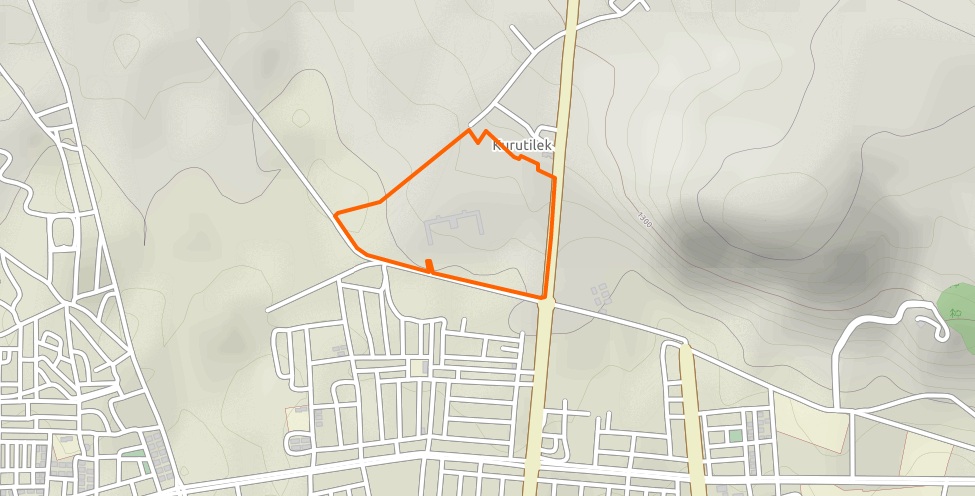|
Zilan Massacre
The Zilan massacre ( ku, Komkujiya Zîlanê, tr, 1=Zilan Katliamı or Zilan Deresi Katliamı, etc.) was the massacre of thousands of Kurdish civilians by the Turkish Land Forces on the orders of İsmet İnönü in the Zilan Valley of Van Province on 12/13 July 1930, during the Ararat rebellion in Ağrı Province. The massacre took place to the north of the town of Erciş on Lake Van. It was carried out by the IX Corps of the Third Army under the command of Ferik (Lieutenant General) Salih Omurtak. The number of people killed in the massacre ranges from 4,500 women and elderly to 15,000.Yusuf Mazhar, ''Cumhuriyet'', 16 Temmuz 1930, ''... Zilan harekatında imha edilenlerin sayısı 15.000 kadardır. Zilan Deresi ağzına kadar ceset dolmuştur...'' Ahmet Kahraman, ''ibid'', p. 211, '' Karaköse, 14 (Özel muhabirimiz bildiriyor) ...'' Ayşe Hür"Osmanlı'dan bugüne Kürtler ve Devlet-4", ''Taraf'', October 23, 2008, Retrieved August 16, 2010. Background After the ... [...More Info...] [...Related Items...] OR: [Wikipedia] [Google] [Baidu] |
Cumhuriyet
''Cumhuriyet'' (; English: " Republic") is the oldest up-market Turkish daily newspaper. It has been described as "the most important independent public interest newspaper in contemporary Turkey". The newspaper was awarded the ''Freedom of Press Prize'' by Reporters Without Borders in 2015 and the Alternative Nobel Prize in 2016. Since 17 October 2005, the newspaper's headquarters have been located in Istanbul's Şişli district, after being the last newspaper to leave the traditional press district of Cağaloğlu. The newspaper also has offices in Ankara and İzmir. The newspaper'advertisementsbefore the 2007 Turkish presidential election and general election with the message "Are you aware of the danger?" were controversial. 's office in Istanbul was the site of a molotov attack in 2008. In 2010, the newspaper was one of the first up-market newspapers in Turkey to abandon the established broadsheet format for the midi-sized Berliner format. In January 2015, the news ... [...More Info...] [...Related Items...] OR: [Wikipedia] [Google] [Baidu] |
Taraf
''Taraf'' ("Side" in Turkish) was a liberal newspaper in Turkey. It had distinguished itself by opposing interference by the Turkish military in the country's social and political affairs. It was distributed nationwide, and had been in circulation since November 15, 2007. On July 27, 2016, the newspaper was closed under a statutory decree during the state of emergency after the 2016 Turkish coup d'état attempt, due to its alleged links with the coup plotters' Gülen movement. Overview ''Taraf'' has published a series of highly-controversial stories that revealed the involvement of the Turkish military in daily political affairs. The revealed documents, such as coup plans that involved the bombing of historical mosques in Turkey ( "Sledgehammer" coup plan) and bombing of a museum ( Operation Cage Action Plan), significantly damaged the social image of the Turkish military. The sources that leaked such critical insider information to ''Taraf'' are still unknown. The response of t ... [...More Info...] [...Related Items...] OR: [Wikipedia] [Google] [Baidu] |
Ayşe Hür
Aisha ( ar, عائشة, ʿĀʾishah, she who lives' or 'womanly; also spelled A'aisha, A'isha, Aischa, Aische, Aishah, Aishat, Aishath, Aicha, Aïcha, Aisya, Aisyah, Aiša, Ajša, Aixa, Ayesha, Aysha, Ayşe, Ayisha, or Iesha) is an Arabic female given name. It originated from Aisha, the youngest wife of the Islamic prophet, Muhammad, and is a very popular name among Muslim women. ''Ayesha'' and Aisha are common variant spelling in the Arab World and among American Muslim women in the United States, where it was ranked 2,020 out of 4,275 for females of all ages in the 1990 US Census. The name Ayesha was briefly popular among English-speakers after it appeared in the book ''She'' by Rider Haggard, as well as the song "Aicha" by French Algerian singer Khaled. Given name Aisha *Aisha, a wife of Muhammad *Aisha (Latvian singer) (Aija Andrejeva, born 1986) *Aisha (reggae singer) (Pamela Ross, born 1962), a British singer *Aisha Toussaint, Seychellois actress *Aisha Sultan Begum, first ... [...More Info...] [...Related Items...] OR: [Wikipedia] [Google] [Baidu] |
Ağrı
Ağrı ( ku, Agirî; ) is the capital of Ağrı Province in eastern Turkey, near the border with Iran. Formerly known as Karaköse ( ku, Qerekose) from the early Turkish republican period until 1946, and before that as Karakilise ( ota, قرهکلیسا, Karakilisa, lit=Black Church; ), the city is now named after Ağrı, the Turkish name of Mount Ararat''.'' History In the Ottoman Empire era, the area was called Karakilisa (). The current town center was founded around 1860 by a group of Armenian merchants from Bitlis with the name Karakilise () that became known to the local population as Karakise, and this version was turned officially to Karaköse at the beginning of the Republican era. This name was changed to Ağrı by 1946. In the years of 1927 to 1931, the region was under the occupation of the Kurdish separatist movements, which gained to establish an unrecognized state named Republic of Ararat which was led by several Kurdish leaders, some of the Main were Ibrahim Hes ... [...More Info...] [...Related Items...] OR: [Wikipedia] [Google] [Baidu] |
Berliner Tageblatt
The ''Berliner Tageblatt'' or ''BT'' was a German language newspaper published in Berlin from 1872 to 1939. Along with the '' Frankfurter Zeitung'', it became one of the most important liberal German newspapers of its time. History The ''Berliner Tageblatt'' was first published by Rudolf Mosse as an advertising paper on 1 January 1872, but developed into a liberal newspaper. On 5 January 1919 the office of the newspaper was briefly occupied by Freikorps soldiers in the German Revolution. By 1920, the ''BT'' had achieved a daily circulation of about 245,000. Prior to the National Socialist administration taking office on 30 January 1933, the newspaper was particularly critical and hostile to their program. On 3 March 1933, after the Reichstag fire, Rudolf Mosse's son-in-law, Hans Lachmann-Mosse, the publisher, dismissed editor in chief Theodor Wolff because of his criticism of the Nazi government and his Jewish ancestry. Wolff by then fled to the Tyrol in Austria by plane. A ... [...More Info...] [...Related Items...] OR: [Wikipedia] [Google] [Baidu] |
Salih Omurtak
Salih Omurtak (1889–23 June 1954) was a Turkish general and the fourth Chief of the General Staff of the Turkish Armed Forces. Biography He was born 1889 in Thessaloniki, in the Salonica Vilayet of the Ottoman Empire (present-day Greece). He graduated from the Military College in 1907 with the rank of a lieutenant. After finishing the Staff College in 1910, he became a staff officer and served at several headquarters in the Ottoman Army. Deployed to Ankara on 22 January 1920, he joined the Turkish revolutionaries and commanded various troops during and after the Turkish War of Independence, including the 61st Division. He was promoted to the rank of the Mirliva in 1926, and in 1930, he became a Ferik. From 1940 on, Omurtak held the commander-in-chief post of the First Army in the rank of the Orgeneral (four-star general). He was appointed Chief of the General Staff of the Turkish Armed Forces on 1 August 1946 following the resignation of Kazım Orbay, and served at thi ... [...More Info...] [...Related Items...] OR: [Wikipedia] [Google] [Baidu] |
Lieutenant General
Lieutenant general (Lt Gen, LTG and similar) is a three-star military rank (NATO code OF-8) used in many countries. The rank traces its origins to the Middle Ages, where the title of lieutenant general was held by the second-in-command on the battlefield, who was normally subordinate to a captain general. In modern armies, lieutenant general normally ranks immediately below general and above major general; it is equivalent to the navy rank of vice admiral, and in air forces with a separate rank structure, it is equivalent to air marshal. A lieutenant general commands an army corps, made up of typically three army divisions, and consisting of around 60 000 to 70 000 soldiers (U.S.). The seeming incongruity that a lieutenant general outranks a major general (whereas a major outranks a lieutenant) is due to the derivation of major general from sergeant major general, which was a rank subordinate to lieutenant general (as a lieutenant outranks a sergeant major). In contrast, ... [...More Info...] [...Related Items...] OR: [Wikipedia] [Google] [Baidu] |
Ferik (military Rank)
( ar, فريق, Fariq) is a military rank used in the militaries of many Arab nations, and formerly of the Ottoman Armed Forces. Usually, it ranks below Fariq 'awal ( ar, فريق أول) and above Liwa ( ar, لواء). Ottoman use It was senior to a ''Mirliva'' (Brigadier General, modern ''Tuğgeneral'' in the Turkish Army) and junior to a ''Birinci Ferik'' (Lieutenant General, modern ''Korgeneral'' in the Turkish Army). The collar mark (later shoulder mark) and cap of a ''Ferik'' had three stripes and two stars during the early years of the Turkish Republic. The Ottoman Army and pre-1934 Turkish Army had three general ranks (similar to the British ranking system), while the current Turkish Army has four general ranks (similar to the American ranking system), with the inclusion of General ''(Orgeneral)'' as the fourth introduced in 1934. The title of ''Ferik'' was abolished with Act No. 2590 of 26 November 1934 on the Abolition of Titles and Appellations such as E ... [...More Info...] [...Related Items...] OR: [Wikipedia] [Google] [Baidu] |
Third Army (Turkey)
The Turkish Third Army is a field army of the Turkish Army and is the country's largest army. History It traces its origins to 1923, but further back, the Ninth Army Troops Inspectorate was redesignated the Third Army Troops Inspectorate on 15 June 1919. General Ragıp Gümüşpala commanded the army between 1958 and 1960. In the days of the Soviet Union the Third Army was stationed on the Caucasus border to counter any Soviet attack by the Transcaucasus Military District. In 1973 the Army, with headquarters at Erzincan, had the 8th Corps at Elazığ (including the 12th Infantry Division (Turkey), today 12th Mechanised Infantry Brigade at Ağrı), the 9th Corps at Erzurum (including 9th Infantry Division at Sarıkamış (which was active to at least 1996), and the 11th Corps at Trabzon. After 1974–75 and the Turkish invasion of Cyprus 11th Corps headquarters was moved to North Cyprus. Following the dissolution of the Warsaw Pact and the Soviet Union, the General Staff de ... [...More Info...] [...Related Items...] OR: [Wikipedia] [Google] [Baidu] |
IX Corps (Turkey)
{{mil-unit-dis ...
9 Corps, 9th Corps, Ninth Corps, or IX Corps may refer to: France * 9th Army Corps (France) * IX Corps (Grande Armée), a unit of the Imperial French Army during the Napoleonic Wars Germany * IX Corps (German Empire), a unit of the Imperial German Army prior to and during World War I * IX Reserve Corps (German Empire), a unit of the Imperial German Army during World War * IX Army Corps (Wehrmacht), a unit in World War II * IX SS Mountain Corps, a unit in World War II Other countries * IX Corps (India) * IX Corps (Ottoman Empire) * IX Corps (United Kingdom) * IX Corps (Union Army) * IX Corps (United States) * 9th Corps (Yugoslav Partisans) See also *List of military corps by number {{short description, None This is a list of military corps arranged by ordinal number. I to X ; I Corps: * I Army Corps (Argentina) * I ANZAC Corps (Australia and New Zealand) * I Corps (Australia) * I Corps (Belgium) * 1st Corps of the Army of ... [...More Info...] [...Related Items...] OR: [Wikipedia] [Google] [Baidu] |


